Sunday, February 28, 2010
Comedian Lenny Bruce Overdosed on the Toilet
Friday, February 26, 2010
Comedian John Belushi's Chateau Overdose
Early life
John Belushi was born in Chicago, Illinois, the son of Agnes Belushi (née Samaras), a cashier and first-generation Albanian-American, and Adam Belushi (b. 1919), an Albanian immigrant and restaurant operator who left his native village, Qytezë, in 1934 at the age of sixteen.[2][3][4][5] The family's name at the time of immigration was Bellios, or Belliors.[5] Belushi was raised in the Albanian Orthodox church[6] and grew up outside Chicago in Wheaton with a brother Jim, five-and-a-half years his junior. He attended Wheaton Central High School, where he met his future wife, Judy Jacklin, and was a middle linebacker for the school's football team. He attended the University of Wisconsin–Whitewater and the College of DuPage near Chicago.
Career
Belushi's first big break as a comedian occurred in 1971, when he joined The Second City comedy troupe in Chicago. Thanks to a caricature of singer Joe Cocker's intense and jerky stage presence, he was cast in National Lampoon's Lemmings, a parody of Woodstock, which played Off-Broadway in 1972 and also showcased future Saturday Night Live (SNL) performers Chevy Chase and Christopher Guest.
From 1973 to 1975, National Lampoon Inc. aired The National Lampoon Radio Hour, a half-hour comedy program syndicated across the country on approximately 600 stations. When original director Michael O'Donoghue quit in 1974, Belushi took over the reins until the show was canceled. Other players on the show included future SNL regulars Gilda Radner, Bill Murray, Brian Doyle-Murray and Chevy Chase. Belushi married Judy Jacklin (Judy Pisano), an associate producer of The Radio Hour. A number of comic segments first performed on The Radio Hour would be translated into SNL sketches in the show's early seasons.
1975-1979
Belushi achieved national fame for his work on Saturday Night Live, which he joined as an original cast member in 1975. Between seasons of the show, he made one of his best-known movies, Animal House. As several Belushi biographies have noted, on John's 30th birthday (in 1979), he had the number one film in the U.S. (Animal House), the number one album in the U.S. (The Blues Brothers: Briefcase Full of Blues) and Saturday Night Live was the highest-rated late night television program. In the toga party scene in the basement of the fraternity house in Animal House, the uncredited coed dancing with Bluto (Belushi) is his wife. While filming Animal House, Belushi made an appearance at Ithaca College in 1976. When introduced, he came onstage with a chainsaw and cut up the podium.
When interviewed for retrospectives on John Belushi, Dan Aykroyd told stories of John often finishing SNL rehearsals, shows or film shoots and, exhausted, simply walking unannounced into nearby homes of friends or strangers, scrounging around for food and often falling asleep, unable to be located for the following day's work. This was the impetus for the SNL horror-spoof sketch "The Thing That Wouldn't Leave," in which Belushi torments a couple (played by Jane Curtin and Bill Murray) in their home looking for snacks, newspapers and magazines to read, and taking control of their television. SNL also featured a short film by writer Tom Schiller called "Don't Look Back In Anger," where Belushi playing himself as an old man, visits the graves of his now-former cast-members, the last to survive. Ironically, Belushi was the first SNL cast member to die.
Belushi left Saturday Night Live in 1979 to pursue a film career. Belushi would make four more movies; three of them, 1941, Neighbors, and most notably The Blues Brothers were made with fellow SNL alumnus Dan Aykroyd.
Dan Aykroyd wrote the roles of Dr. Peter Venkman in Ghostbusters and Emmett Fitz-Hume in Spies Like Us with Belushi in mind, and the roles were actually played by Belushi's former SNL castmates Bill Murray and Chevy Chase, respectively. Aykroyd used to joke that the green ghost Slimer in Ghostbusters was "the ghost of John Belushi", given that he had a similar party animal personality.
Released in September 1981, the romantic comedy Continental Divide starred Belushi as Chicago home town hero writer Ernie Souchack who gets put on assignment researching a scientist studying birds of prey in the remote rocky mountains. Belushi's character "Ernie Souchak" was loosely based on popular, now deceased Chicago columnist Mike Royko.
At the time of his death, Belushi was pursuing several movie projects, including Noble Rot, an adaptation of a script by former The Mary Tyler Moore Show writer/producer Jay Sandrich entitled Sweet Deception; noble rot is a benevolent fungus that can infect wine grapes on the vine, helping to produce high quality sweet wines. Belushi was rewriting the script with former Saturday Night Live colleague Don Novello.
Personal life
The "College" sweatshirt Belushi wore in National Lampoon's Animal House was purchased in Carbondale, Illinois, when his brother, Jim, was a student at Southern Illinois University Carbondale.[7]
According to writer/actor Tim Kazurinsky in the book Live From New York, mentor and close friend Belushi was instrumental in getting fellow Second City alumnus Kazurinsky onto Saturday Night Live in 1981. But during his run on the show, Kazurinsky became very stressed out by its demands. He later called Belushi and said that he needed a ride to the airport because he was quitting and moving back to Chicago. Belushi and his wife picked him up but refused to bring him to the airport, at which Belushi told Kazurinsky that the show's atmosphere can get bad, but that he still had access to major broadcasting airwaves. Instead, Belushi took the performer to a psychiatrist whom he saw for a year, while staying with the show during his run.
It was Belushi who recruited the band Fear and brought them to Cherokee Studios to record songs for the soundtrack of Neighbors, a film he and Aykroyd were starring in. Music producing partners Steve Cropper and Bruce Robb remember recording the music, but nobody knows exactly what happened with the final soundtrack, which was ultimately replaced in the film by a traditional movie score. Cherokee Studios was a regular haunt for the original Blues Brothers back in the early days of the band. John Belushi and Dan Aykroyd became fixtures at the recording studio, while fellow Blues Brother and guitar player Steve Cropper called Cherokee his producing home. Whenever they needed a bass player, they were joined by another Blues Brother, Donald "Duck" Dunn. During this time, Cropper along with producing partner and Cherokee owner Bruce Robb worked on a number of music projects with the two comedian/musicians, the band Fear and later Aykroyd's movie "Dragnet." "What can I say? John was excessively talented, and I guess you could say he sort of lived life 'excessively.' I think what happened to John had a sobering effect on a lot of people, me included," said music producer Bruce Robb.
Belushi was generous to his friends and family, often lending them money when they asked. He bought his father a ranch near San Diego, and helped set up his old friends in Chicago with their own businesses. He helped his brother Jim find a spot at Second City, where he himself acted in the early days of his career. His generous side also showed during his time in the Blues Brothers; he often played songs by blues artists he thought could use the money from the royalties.
 Death
DeathOn March 5, 1982, Belushi was found dead in his room at Bungalow #3 of the Chateau Marmont on Sunset Boulevard in Los Angeles, California.[8] The cause of death was a speedball, a combined injection of cocaine and heroin. On the night of his death, he was visited separately by friends Robin Williams (at the height of his own drug exploits)[9] and Robert De Niro,[10] each of whom left the premises, leaving Belushi in the company of assorted others, including Cathy Smith. His death was investigated by forensic pathologist Dr. Ryan Norris among others, and while the findings were disputed, it was officially ruled a drug-related accident.
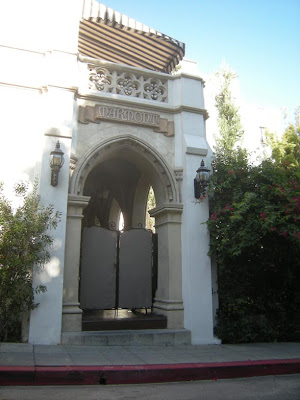 Two months later, Smith admitted in an interview with the National Enquirer that she had been with Belushi the night of his death and had given him the fatal speedball shot. After the appearance of the article "I Killed Belushi" in the Enquirer edition of June 29, 1982, the case was reopened. Smith was extradited from Toronto, arrested and charged with first-degree murder. A plea bargain arrangement reduced the charges to involuntary manslaughter, and she served 15 months in prison[11].
Two months later, Smith admitted in an interview with the National Enquirer that she had been with Belushi the night of his death and had given him the fatal speedball shot. After the appearance of the article "I Killed Belushi" in the Enquirer edition of June 29, 1982, the case was reopened. Smith was extradited from Toronto, arrested and charged with first-degree murder. A plea bargain arrangement reduced the charges to involuntary manslaughter, and she served 15 months in prison[11].In one of Belushi's last TV appearances, he filmed a cameo for the comedy series Police Squad!. At the suggestion of the show's producer, Robert K. Weiss, Belushi was filmed, face down in a swimming pool, dead. The footage was part of a running gag where the episode's guest-star would not survive past the opening credit sequence without meeting some gruesome end. Also, as noted in one of the commentary tracks on the DVD, John nearly drowned during the filming of the scene. The scene never aired.
Belushi and his friend Dan Aykroyd were slated to present the Academy Award for Best Visual Effects at the 54th Academy Awards, an event held less than four weeks after his death. Aykroyd presented the award alone, commenting on the stage "My partner would have loved to have been here to present this award, given that he was something of a visual effect himself."
Belushi is interred in Abel's Hill Cemetery on Martha's Vineyard Chilmark, Massachusetts. His tombstone reads "I may be gone, but Rock and Roll lives on." His gravestone is not above his body. It was moved after operators of the cemetery had found many signs of vandalism and rowdiness where his body lies. He also has a cenotaph at Elmwood Cemetery in River Grove, Illinois.
Tributes
John Belushi's life is detailed in the 1985 biography Wired: The Short Life and Fast Times of John Belushi by Bob Woodward. Many friends and relatives of Belushi, including his wife Judy, Dan Aykroyd and Jim Belushi, agreed to be interviewed at length for the book, but later felt the final product was exploitative and not representative of the John Belushi they knew. The book was later adapted into a feature film in which Belushi was played by Michael Chiklis. Belushi's friends and family boycotted the film, which proved to be critical and caused the movie to be a box-office flop.
Belushi was portrayed by actors Eric Siegel in Gilda Radner: It's Always Something, Tyler Labine in Behind the Camera: The Unauthorized Story of Mork & Mindy (which also features his friendship with Robin Williams), and Michael Chiklis in Wired.
His widow later remarried and is now Judith Belushi Pisano. Her biography (with co-biographer Tanner Colby) of John, Belushi: A Biography is a collection of first-person interviews and photographs, and was published in 2005.
On April 1, 2004, 22 years after his death, Belushi was honored with a star on the Hollywood Walk of Fame, after a ten-year lobby by James Belushi and Judith Belushi Pisano. Among those present at the ceremony were Dan Aykroyd, Chevy Chase, Ted Danson, Mary Steenburgen, and Tom Arnold.
In 2006, Biography Channel aired the "John Belushi" episode of Final 24, a documentary following Belushi in the last 24 hours leading to his death.
Filmography
Tarzoon: Shame of the Jungle (1975) (voice) (1979 American dubbed version)
Animal House (1978)
The Rutles: All You Need Is Cash (1978)
Goin' South (1978)
Old Boyfriends (1979)
1941 (1979)
The Blues Brothers (1980)
Continental Divide (1981)
Neighbors (1981)
SNL characters and impersonations
Recurring characters
Samurai Futaba
Captain Ned, one of Miles Cowperthwaite's cronies
Jacob Papageorge alias 'Joliet' Jake Blues, from the Blues Brothers
Jeff Widette, from the Widettes
Kevin (from The Mall sketches)
Kuldorth (from The Coneheads)
Larry Farber (one half of the Farber couple [the wife, Bobbi, was played by Gilda Radner])
Lowell Brock, from the H&L Brock commercials
Matt Cooper, from the Land Shark sketches
Pete, from the Olympia Cafe
Steve Beshekas (who was in real life a good friend of Belushi's since community college)
Frank Leary, one of St. Mickey's Knights of Columbus
Celebrity impersonations
Al Hirt
Babe Ruth
Bert Lance
Cesar Romero
Dino De Laurentiis
Ed Ames
Ed Asner
Elizabeth Taylor
Elvis Presley
Franklin D. Roosevelt
Fred Silverman
George Wallace
Henry Kissinger
Hermann Göring
Jack Kerouac
Jawaharlal Nehru
Jimmy Hoffa
Joe Cocker
John Lennon
Julia Child
Leonid Brezhnev
Ludwig van Beethoven
Marlon Brando
Menachim Begin
Richard Daley
Robert Blake
Roy Orbison
Sam Peckinpah
Sanjay Gandhi
Steve Rubell
Sun Myung Moon
Tip O'Neill
Truman Capote
Vasiliy Alekseyev
William Shatner
Woody Hayes
Yasser Arafat
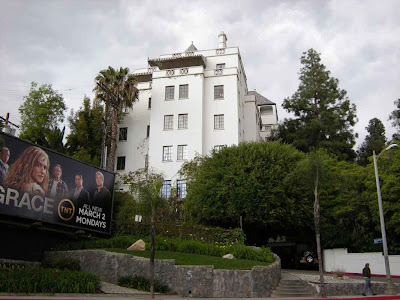 References
References1.^ It’s The Artie Talkin’ - DIMP interviews Artie Lange from dvdinmypants.com
2.^ Belushi's SNL Bio from NBC.com
3.^ John Belushi Biography (1949-1982) from filmreference.com
4.^ Books Of The Times; Close-Up Of John Belushi from the New York Times
5.^ They Were Belushis (or Blues Brothers) from genealogywise.com
6.^ The religion of John Belushi, actor, comedian from adherents.com
7.^ The party's over: Some say SIUC has finally shed rowdy school image, a May 8, 2006 article from The Southern Illinoisan
8.^ "John Belushi, Manic Comic of TV and Films Dies.". New York Times. "John Belushi, the manic, rotund comedian whose outrageous antics and spastic impersonations on the Saturday Night Live television show propelled him to stardom in the 1970's, was found dead yesterday in a rented bungalow in Hollywood, where he had launched a film career in recent years. The 33-year-old actor ..."
9.^ Robin Williams, television biography from the Biography Channel, 7/7/06.
10.^ John Belushi Dies at the Chateau Marmont from franksreelreviews.com
11.^ Figure in John Belushi Case Freed From California Prison - New York Times
-- wiki

If you stop by the Chateau Marmont, don't expect to be able to visit the scene of Belushi's demise - unless you plan on staying the night. Belushi was riding a crest of popularity in 1982, and had more than enough money to hole up in one of the hotel's exclusive bungalows, which are accessible only to guests holding room keys.
But if you slip around behind the hotel and walk the sidewalk along Monteel Road, you can peer down into the area of the tree-shaded bungalows. Belushi's last binge occurred either in Bungalow 3 or Bungalow 2 - there seems to be an equal number of contentions for each locale.
-- The Dark Side of Hollywood - LA Daily News
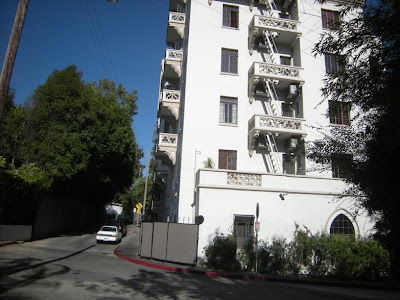


Thursday, February 25, 2010
Walkabout: Fairfax - City Limits
Of course, there's always the ubiquitous coffee store across the street.
Fairfax is the end of the line. West Hollywood ends here. You step east of Fairfax and Sunset, you're now in Hollywood. I had a good walk. Did you?
Wednesday, February 24, 2010
Walkabout: Hayworth, Not Rita Hayworth
Just a few lots south of Sunset on Hayworth, F. Scott Fitzgerald dropped dead of a heart attack in the living room of his lover Sheila Graham's apartment. "Poor son-of-a-bitch," said Dorothy Parker at the funeral.
Bounty Hunter Domino Harvey's West Hollywood Overdose
"Everybody wants to go to heaven,
but nobody wants to die."
-- Domino Harvey
Domino Harvey (August 7, 1969 – June 27, 2005) was an English bounty hunter, notable within that field for being female and from a privileged background. Though there is speculation as to whether or not she really was a model, there are in fact photographs which show her involved in what would appear to be modeling-related work. Harvey's fame was increased posthumously by the 2005 release of the film Domino that was loosely based on her life, with Harvey portrayed by Keira Knightley.
Domino Harvey was born to stage and Oscar-nominated screen actor Laurence Harvey and model Paulene Stone. Stone took the name Domino from Domino Derval, Bond girl in Thunderball portrayed by Claudine Auger, a model she had known. Stone liked the name and decided that if she had another daughter, she would use it.
Harvey had an older half-sister named Sophie, who was Paulene Stone's daughter from her first marriage to Take 6 fashion chain founder Tony Norris. Harvey was her father's only child and goddaughter to Peter Evans, a journalist and author who had introduced her parents to each other. After Laurence Harvey's death in 1973, Evans would co-write the book One Tear is Enough with Paulene Stone. Published in 1975, it was Stone's account of her time with Laurence Harvey.
Harvey was in and out of drug rehabilitation for years. On 4 May 2005, she was arrested at her home on a warrant issued in Mississippi after a federal grand jury indictment charged her and a co-defendant with conspiring to possess and distribute methamphetamines. She was awaiting trial and under house arrest at the time of her death. She would have faced up to 10 years in jail if she had been convicted.
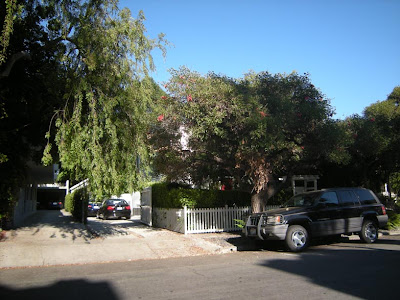
On 27 June 2005, Harvey was found dead in a bathtub in West Hollywood after she became unresponsive while talking to Peter Dice, a "sobriety guardian." Domino had hired Dice to help control her drug use. On 3 September, the Los Angeles County coroner reported that a toxicological exam determined that Harvey died from a overdose of fentanyl, an extremely potent opiate painkiller. Her mother Paulene Stone suggested that Harvey may have been prescribed fentanyl for injuries she sustained in February 2005 when she fell taking her dog for a walk. Her funeral took place on 1 July 2005. Among the attendees were Tony Scott, Mickey Rourke, and Steve Jones.
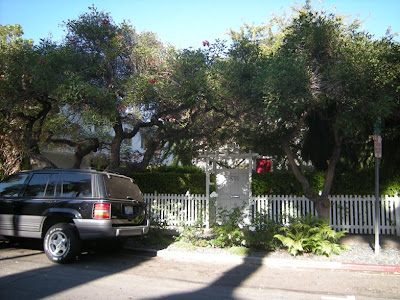
A 22 July 2005 article by the Los Angeles Times quotes her uncle, Warwick Stone, as saying: "she was considering suing several publications for describing her as a lesbian and was also considering suing one of the rehab facilities." Ed Martinez also stated that she had spoken to him about wanting to create a documentary, all based completely on her true life story.
A film loosely based on her life called Domino was released in October 2005. There have been tabloid reports that the ending was changed following her death, and also that she had been unhappy with her portrayal in the film. The film studio has countered that she had been involved with the project with Tony Scott for nearly 12 years. Promotional featurettes for the movie include Harvey on set with the cast and crew; she contributed to the songs on the soundtrack, and also attended the movie's wrap party in December 2004. Harvey herself appears at the very end of the cast credits of the film. She did not see the finished film before her death.
-- wiki
Tuesday, February 23, 2010
Walkabout: Go Ahead & Laugh If You Want To
Schwab's was photographed in the film Sunset Boulevard as a setting where the lead character, down-on-his-luck screenwriter Joe Gillis, ran into friends in the movie industry.
Schwab's closed its doors on October 22, 1983. Five years later, on October 6, 1988, Schwab's fell to the wrecking ball to make way for a shopping complex and multiplex theater.
Although Jamie Masada barely spoke English which he mixed in with Hebrew and Farsi, he was soon working with comedians in a comedy club. Such comedic geniuses as Richard Pryor, David Letterman, Jim Carrey, Rodney Dangerfield, Red Foxx and Neal Israel, took Masada under their wings.
A dispute over club owners refusing to pay comedians drove Masada to create The Laugh Factory in Groucho Marx's old building at the age of 16. With a small loan from Neal Israel, he was able to turn his dream into reality, while simultaneously helping comedians
Recognizing Jamie's passion, Richard Pryor was the first comedian to serenade the Laugh Factory stage in 1979. Masada offered to pay Richard, instead Pryor handed him a hundred dollar bill and wrote on it, "You need this for your rent, boy."
Masada has always been ahead of his time and was called a true visionary by the LA Times. He earned this reputation through brilliant marketing strategies and business ventures- inspired by his passion for comedy.
As the country was gripped with the fear of the AIDS epidemic, The Laugh Factory was the first business in America to provide condoms to its customers. This stroke of marketing genius brought the Laugh Factory national exposure and Masada became a hugely sought after guest on the national press junket. Over the next three decades, Jamie Masada would constantly return to the forefront of national media. In 1985, Masada marched down Pennsylvania Avenue with Bob Hope, Phyllis Diller, Red Foxx, amongst many others in The Laugh Factory's campaign to send the first comedian into space. The campaign drew so much attention that President Regan asked Bob Hope to arrange a meeting with Masada.
USA Today called The Laugh Factory the number one comedy club in the country.
-- www.laughfactory.com

.jpg)
.jpg)
.jpg)
.jpg)
.jpg)

.JPG)
.JPG)
.JPG)
.JPG)
.JPG)
.JPG)
.JPG)
.JPG)

.jpg)
.jpg)
.jpg)
.jpg)
.jpg)
.JPG)
.JPG)
.JPG)
.JPG)